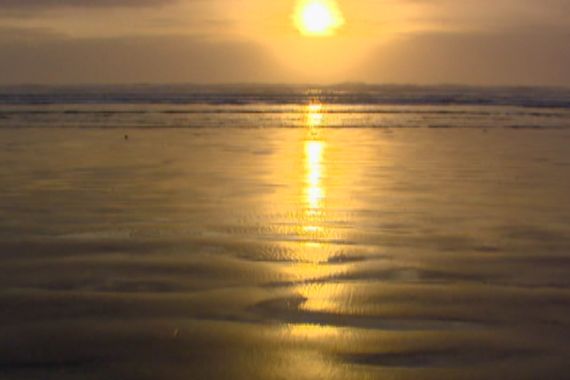US west coast fears tsunami disaster
As northwest coast sits on the Pacific Ocean’s Ring of Fire, concerns are raised over the prospect of natural disaster.

The rugged, rocky coastline of the US state of Oregon is a place of spectacular natural beauty that draws thousands of visitors. Even on a recent grey and chilly day, families frolicked along the beaches. But many of the visitors to the Oregon coast are likely unaware of the steadily growing danger just offshore.
A thousand-kilometre long faultline called the Cascadia Subduction Zone stretches from British Columbia to Northern California. It has caused violent earthquakes and tsunamis many times over the centuries – some just as powerful as the devastating quake and wave that struck Japan on March 11.
Keep reading
list of 4 itemsAre seed-sowing drones the answer to global deforestation?
Rainfall set to help crews battling wildfire near Canada’s Fort McMurray
The Alabama town living and dying in the shadow of chemical plants
I spoke to Nathan Wood, a US government tsunami expert, on the beach in the town of Seaside. He explained that the Cascadia Subduction Zone consists of one huge tectonic plate sliding under another.
“You’ve got the two plates kind of catching, and when they release that causes the earthquake,” Wood said.
The earthquake in turn causes the tsunami. Wood says when it hits, people will have little time to get out of its way.
“It could come in and hit those condos there,” he said, pointing to a line of new buildings on a slight rise above the water level. “Then it would go through and hit that restaurant there, then wipe out those hotels and the first line of houses.”
I suggested that this meant that once the ground shakes, people have got to get moving and get moving quickly.
“They’ve got 20 minutes to think, the earthquake just hit, the tsunamis on its way, I’ve got to get to high ground and I’ve got 20 minutes to get there,” he replied.
There was a big quake here – probably a magnitude 9.0 – in the year 1700. Not many people lived in the area back then, although Native American peoples of the region have a rich folklore describing the event. The wave reached Japan, where chronicles and business records describe damage to docks and warehouses.
Now, of course, there are towns and villages all along the Pacific Northwest coast. On a summer day, the population swells as tourists make their way to the beach. Overall, at peak season there are more than 100,000 people within the tsunami danger zone.
Core samples
It’s been over 300 years since a major earthquake and tsunami hit the Pacific Northwest. Now, using new research, scientists believe the region may be overdue another big one.
At Oregon State University, scientists have been painstakingly examining hundreds of core samples from the sea bed, dating back 10,000 years. Professor Chris Goldfinger points to a section where disturbed sediment indicates an earthquake struck 310 years ago.
“This is, we think, the twin of the Sendai earthquake,” Goldfinger says, referring to the magintude 9.0 Japan quake on March 11. Goldfinger’s measurements indicate a major quake and tsunami in the Cascadia subduction zone happens about once ever 250 years.
“With a 150-year repeat time, 310 years since the last quake starts to seem like a very long time, and it is then more or less overdue,” he says.
Nearby, Oregon State’s wave lab is the only facility on earth that can simulate tsunami waves for study. Inside a yawning, hangar-like building a giant apparatus sends miniature tsunami waves crashing onto a rocky beach
Professor Harry Yeh has spent his career analysing waves. He says the size and strength of the Japanese tsunami was much greater than scientists ever anticipated, leading him to reconsider basic assumptions about these rare and extremely destructive events.
And he’s worried about how defenseless towns in Pacific Northwest are in the face of a major tsunami.
“Almost all the houses on the Oregon and Washington coast are wood frame buildings,” Yeh says. “These hold up pretty well to earthquake shaking, but they are the most vulnerable to tsunami forces.”
At various spots along the highway that parallels the coast, blue and white “Tsunami Danger Zone” signs have been set up, with a cartoon-like depiction of a stick figure man running away from a menacing wave.
But scientists agree federal state and local governments must do much more to educate and warn people on the coast about tsunamis and how to survive them. They believe the US population is much less well prepared than the Japanese.
And the geological clock is ticking. Someday, maybe soon, the great wave will rear up and rush toward the coast at terrifying speed. Its just a question of when.